Journal Description
Pharmaceuticals
Pharmaceuticals
is a peer-reviewed, open access journal of medicinal chemistry and related drug sciences, published monthly online by MDPI. The Academy of Pharmaceutical Sciences (APS) is partners of Pharmaceuticals and their members receive a discount on the article processing charge.
- Open Access free for readers, with article processing charges (APC) paid by authors or their institutions.
- High Visibility: indexed within Scopus, SCIE (Web of Science), PubMed, PMC, Embase, CAPlus / SciFinder, and other databases.
- Journal Rank: JCR - Q1 (Pharmacology and Pharmacy) / CiteScore - Q2 (Pharmaceutical Science)
- Rapid Publication: manuscripts are peer-reviewed and a first decision is provided to authors approximately 13.9 days after submission; acceptance to publication is undertaken in 3.4 days (median values for papers published in this journal in the second half of 2024).
- Recognition of Reviewers: reviewers who provide timely, thorough peer-review reports receive vouchers entitling them to a discount on the APC of their next publication in any MDPI journal, in appreciation of the work done.
- Testimonials: See what our editors and authors say about Pharmaceuticals.
- International Electronic Conference on Medicinal Chemistry (https://sciforum.net/series/ecmc/latest)
- Companion journals for Pharmaceuticals include: Pharmacoepidemiology, Psychoactives and Drugs and Drug Candidates.
Impact Factor:
4.3 (2023);
5-Year Impact Factor:
4.6 (2023)
Latest Articles
Synergizing Success: The Role of Anlotinib Combinations in Advanced Non-Small Cell Lung Cancer Treatment
Pharmaceuticals 2025, 18(4), 585; https://doi.org/10.3390/ph18040585 - 16 Apr 2025
Abstract
Anlotinib, a novel receptor tyrosine kinase inhibitor that is taken orally, targets several RTKs and is authorized as a third-line treatment for patients with advanced non-small cell lung cancer (NSCLC). Anlotinib is also used in combination with immunotherapy or chemotherapy for advanced NSCLC.
[...] Read more.
Anlotinib, a novel receptor tyrosine kinase inhibitor that is taken orally, targets several RTKs and is authorized as a third-line treatment for patients with advanced non-small cell lung cancer (NSCLC). Anlotinib is also used in combination with immunotherapy or chemotherapy for advanced NSCLC. We aimed to explore the efficacy and safety of anlotinib-based regimens in NSCLC treatment, focusing on combination therapies. We also addressed challenges that hinder oncologists from using it, such as toxicity and resistance mechanisms. A systematic approach involves searching the National Institute of Health PubMed, Scopus, MedLine, and Web of Science databases up to April 2024. Relevant studies were identified and analyzed for their methodologies, outcomes, and patient characteristics. Findings revealed that numerous effective combination regimens, such as anlotinib with platinum-based chemotherapy and anlotinib combined with PD-1 blockades, have shown positive results in terms of progression-free survival (PFS), overall survival (OS), and objective response rate (ORR). On the other hand, NSCLC treatment faces hurdles due to drug resistance and its toxicity profile. These challenges underscore the need for continued research and optimization of treatment strategies.
Full article
(This article belongs to the Special Issue Cancer Chemoradiotherapy)
►
Show Figures
Open AccessArticle
Evaluation of Chitosan-Based Axiostat as Hemostatic Dressing for Endovascular Procedures in Patients with Leriche Syndrome on Anticoagulant Therapy
by
Paolo Perri, Federica Curcio, Michele De Luca, Paolo Piro, Sonia Trombino and Roberta Cassano
Pharmaceuticals 2025, 18(4), 584; https://doi.org/10.3390/ph18040584 - 16 Apr 2025
Abstract
►▼
Show Figures
Background/Objectives: The safe completion of a non-invasive procedure is crucial to the success of an endovascular approach. Chitosan, a natural polysaccharide derived from chitin, is an ideal material for the study and application of medical devices in post-operative wound management. Methods: The present
[...] Read more.
Background/Objectives: The safe completion of a non-invasive procedure is crucial to the success of an endovascular approach. Chitosan, a natural polysaccharide derived from chitin, is an ideal material for the study and application of medical devices in post-operative wound management. Methods: The present work is based on a retrospective study conducted on a sample of patients treated with Axiostat (a sterile, single-use, non-absorbable dressing), composed of 100% chitosan and designed to instantly stop bleeding through a mucus adhesion mechanism for the treatment of conditions such as Leriche’s syndrome. The objective was to evaluate the efficacy and safety of the hemostatic Axiostat dressing in patients undergoing anticoagulant and/or antiplatelet therapy in whom endovascular procedures using the axillary artery as an access site are performed to treat Leriche syndrome. Results: The obtained results showed that Axiostat is safe and effective in promoting hemostasis at the axillary vascular access site even when prolonged hemostasis was required in patients on antiplatelet and anticoagulant therapy. The mean time to hemostasis was 5.75 min in all types of patients considered.
Full article

Figure 1
Open AccessArticle
Prognostic Factors and Talaporfin Sodium Concentration in Photodynamic Therapy for Recurrent Grade 4 Glioma
by
Mikoto Onodera, Shuji Kitahara, Yasuto Sato, Takakazu Kawamata, Yoshihiro Muragaki and Ken Masamune
Pharmaceuticals 2025, 18(4), 583; https://doi.org/10.3390/ph18040583 - 16 Apr 2025
Abstract
Background: Although extensive resection improves the prognosis of gliomas, it risks impairing critical brain functions. Photodynamic therapy (PDT) utilizing talaporfin sodium (TS) targets tumor cells upon light activation. Despite its approval in Japan, TS application remains restricted, and factors influencing its efficacy are
[...] Read more.
Background: Although extensive resection improves the prognosis of gliomas, it risks impairing critical brain functions. Photodynamic therapy (PDT) utilizing talaporfin sodium (TS) targets tumor cells upon light activation. Despite its approval in Japan, TS application remains restricted, and factors influencing its efficacy are unclear. We aimed to identify TS efficacy determinants to optimize treatment outcomes. Methods: Data from 171 patients with grade 4 glioma who underwent surgery and PDT at Tokyo Women’s Medical University Hospital between January 2017 and March 2024 were retrospectively analyzed. Clinical variables evaluated included age, sex, genotype, Karnofsky Performance Status (KPS), serum albumin (Alb) levels, MIB-1 expression levels, and medication history. TS concentrations in tumor tissues were quantitatively assessed in 82 patients (41 primary, 41 recurrent). Survival outcomes were analyzed. RNA-seq was performed on the three highest and three lowest TS concentration samples with significant TS concentration variations to investigate corresponding gene expression changes. Results: Multivariate analysis identified KPS (hazard ratio [95% confidence interval]: 0.96 [0.93–0.99], p = 0.01) and Alb (3.68 [1.05–13.76], p = 0.047) as independent prognostic factors. In recurrent cases, higher TS concentrations were significantly associated with improved survival (p = 0.0454). RNA-seq analysis indicated decreased expression of ACTB and PDPN genes in samples with lower TS concentrations, suggesting potential resistance mechanisms. Conclusions: TS concentration is a critical determinant of PDT efficacy, especially in recurrent glioma, highlighting its prognostic significance. Alb may affect treatment outcomes by mediating TS binding. RNA-seq findings imply that low TS concentrations may suppress immune and stress response-related genes, potentially diminishing PDT sensitivity.
Full article
(This article belongs to the Special Issue New Platforms for Cancer Treatment—Emerging Advances)
►▼
Show Figures

Graphical abstract
Open AccessSystematic Review
Exploring the Pharmacokinetics of Drugs in Disabled Saudi Patients: A Systematic Review
by
Faleh Alqahtani, Saeed A. Al Awadh and Muhammad Fawad Rasool
Pharmaceuticals 2025, 18(4), 582; https://doi.org/10.3390/ph18040582 - 16 Apr 2025
Abstract
Background/Objectives: Disability is a term that involves mental, intellectual, or sensory impairment resulting in the loss of one’s ability to walk or perform the activities necessary to live in a society. This study aims to collect all the data regarding the absorption,
[...] Read more.
Background/Objectives: Disability is a term that involves mental, intellectual, or sensory impairment resulting in the loss of one’s ability to walk or perform the activities necessary to live in a society. This study aims to collect all the data regarding the absorption, distribution, and disposition of drugs in disabled Saudi patients, i.e., patients suffering from epilepsy, cancer, cardiovascular diseases, etc., and then compare these results with data reported in other ethnicities. Methods: An exhaustive online search used the key terms in Google Scholar, PubMed, Cochrane Library, and Science Direct to extract all articles that met the eligibility criteria. All research studies containing pharmacokinetic (PK) parameters (area under the curve from 0 to infinity (AUC0–∞), maximal plasma concentration (Cmax), clearance (CL), volume of distribution, time to reach maximum plasma concentration, and half-life) were included in this review. Results: In pediatric epileptic patients, carbamazepine showed a notable decrease in Cmax with increasing age, which may be due to ontogenetic changes in its disposition. The AUC0–∞ of busulphan in adult hematopoietic stem cell transplantation patients was recorded as 4392.5 ± 1354.65 μg·h/mL, with high inter-individual variability. Moreover, the CL of vancomycin was reported to be 25% higher among cancer patients in comparison to non-cancer subjects. Conclusions: The complications in disabled patients due to alterations in cytochrome P450 enzymes, pathophysiology, genetics, and ethnicity emphasize the significance of patient-centered drug dosing. These findings may aid healthcare physicians in refining therapeutic care in this population.
Full article
(This article belongs to the Special Issue Population Pharmacokinetics and Pharmacogenetics)
►▼
Show Figures
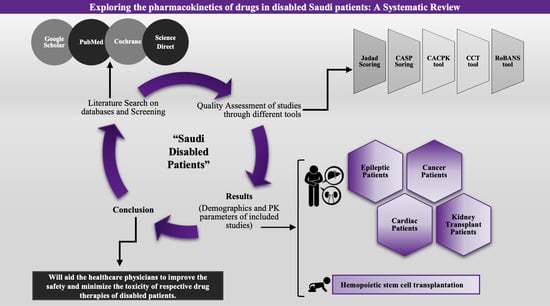
Graphical abstract
Open AccessArticle
Binding Affinity of Synthetic Cannabinoids to Human Serum Albumin: Site Characterization and Interaction Insights
by
Rita M. G. Santos, Rita Lima, Sara Cravo, Pedro Alexandrino Fernandes, Fernando Remião and Carla Fernandes
Pharmaceuticals 2025, 18(4), 581; https://doi.org/10.3390/ph18040581 - 16 Apr 2025
Abstract
Background/Objectives: High-performance affinity chromatography (HPAC) was used to investigate the binding affinity of a series of synthetic cannabinoids, a widely abused class of new psychoactive substances, to human serum albumin (HSA) and obtain insights into the binding sites. To better understand the recognition
[...] Read more.
Background/Objectives: High-performance affinity chromatography (HPAC) was used to investigate the binding affinity of a series of synthetic cannabinoids, a widely abused class of new psychoactive substances, to human serum albumin (HSA) and obtain insights into the binding sites. To better understand the recognition mechanisms, molecular docking studies were conducted. Methods: Binding affinity was assessed through zonal elution approach Additionally, displacement chromatography with site-specific probes provided insights into the HSA binding sites of five synthetic cannabinoids. Results: That these drugs exhibit extensive binding to HSA, with values ranging from 98.7% to 99.9%. Competition for site I was observed between warfarin and four synthetic cannabinoids (5F-AMB, AB-PINACA, AMB-FUBINACA, and AB-CHMINACA). Furthermore, AB-CHMINACA also competed with L-tryptophan for site II. The binding affinity of all synthetic cannabinoids increased in the presence of (S)-ibuprofen. Molecular docking studies supported the experimental findings, reinforcing the insights gained. Conclusions: The key novelty of this study lies in analyzing, for the first time, the binding affinity of synthetic cannabinoids to HSA through HPAC and molecular docking. These results may improve our understanding of their toxicokinetic behavior and help in predicting possible competitive interactions that could influence HSA binding and, consequently, their activity and toxicity. This study is the first to describe the binding affinity of synthetic cannabinoids to HSA, elucidate their recognition mechanisms, identify binding sites, and characterize their interactions with the protein.
Full article
(This article belongs to the Special Issue Innovative Tools for Drug Analysis and Therapeutic Drug Monitoring (TDM))
►▼
Show Figures
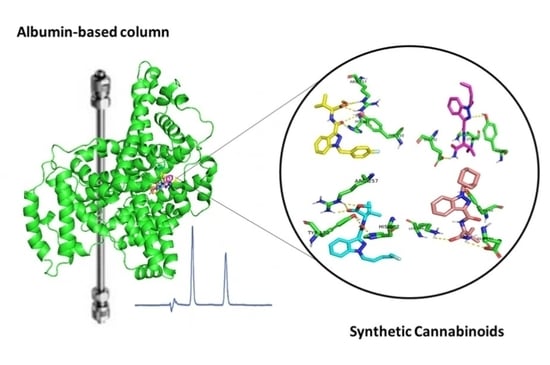
Graphical abstract
Open AccessReview
Recent Developments of 1,3,4-Thiadiazole Compounds as Anticancer Agents
by
Serena Indelicato, David Bongiorno, Manuela Mauro and Stella Cascioferro
Pharmaceuticals 2025, 18(4), 580; https://doi.org/10.3390/ph18040580 - 16 Apr 2025
Abstract
The World Health Organization has recently underlined the increasing global burden of cancer, with a particularly alarming impact on underserved populations. In recent years, 1,3,4-thiadiazole has emerged as a versatile pharmacophore to obtain bioactive compounds. The pharmacological properties of this ring are primarily
[...] Read more.
The World Health Organization has recently underlined the increasing global burden of cancer, with a particularly alarming impact on underserved populations. In recent years, 1,3,4-thiadiazole has emerged as a versatile pharmacophore to obtain bioactive compounds. The pharmacological properties of this ring are primarily attributed to its role as a bioisostere of pyrimidine, the core structure of three nucleic bases. This structural feature endows 1,3,4-thiadiazole derivatives with the ability to interfere with DNA replication processes. Additionally, the mesoionic behavior of this heterocycle gives it important properties, such as the ability to cross biological membranes and interact with target proteins. Noteworthy, in analogy to the other sulfur heterocycles, the presence of C-S σ* orbitals, conferring small regions of low electron density on the sulfur atom, makes interaction with the target easier. This review focuses on the most promising anticancer agents with 1,3,4-thiadiazole structure reported in the past five years, providing information that may be useful to medicinal chemists who intend to develop new anticancer derivatives.
Full article
(This article belongs to the Special Issue Drug Target Exploration and Drug Design & Development Based on Small Molecule)
►▼
Show Figures
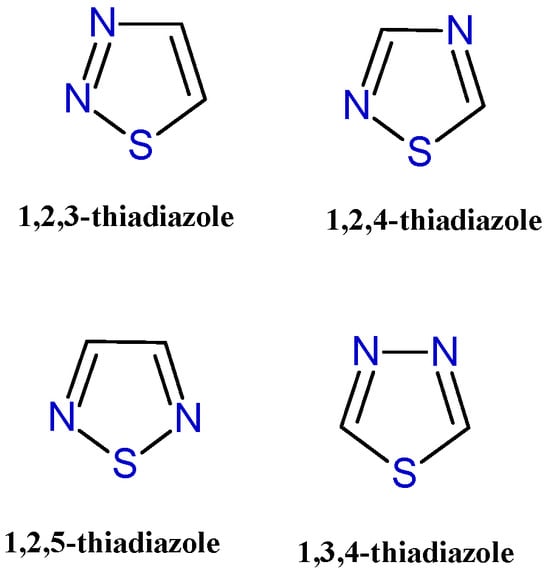
Figure 1
Open AccessArticle
Comparative Forced Degradation Study of Anticomplement C5 Biosimilar and Originator Monoclonal Antibodies
by
Merve Celik Yamaci, Ceren Pamukcu, Yigit Erdemgil, Ahmet Emin Atik, Zeynep Zulfiye Yildirim Keles and Ozge Can
Pharmaceuticals 2025, 18(4), 579; https://doi.org/10.3390/ph18040579 - 16 Apr 2025
Abstract
Background/Objectives: The stress testing of biotherapeutic products is a critical component of drug development, enabling the assessment of stability, biosimilarity, and degradation pathways. Subjecting biosimilar monoclonal antibodies to controlled stress conditions yields essential insights into their structural and functional integrity, informing formulation
[...] Read more.
Background/Objectives: The stress testing of biotherapeutic products is a critical component of drug development, enabling the assessment of stability, biosimilarity, and degradation pathways. Subjecting biosimilar monoclonal antibodies to controlled stress conditions yields essential insights into their structural and functional integrity, informing formulation optimization and mitigating risks before clinical trials. In this study, biosimilar products were comprehensively characterized and compared with originator products under forced degradation. The aim was to expose the products to different stress conditions such as oxidative, pH, thermal, freeze/thaw, and agitation. The products were then tested at defined time points using validated analytical methods. Methods: This study employed size-exclusion chromatography to detect aggregated forms. Isoelectric focusing characterized protein charge variants (e.g., acidic/basic isoforms) from post-translational modifications, while capillary electrophoresis quantified product-related impurities (aggregates and fragments). In addition, a complement assay was used to determine the efficacy and potency under specific stress conditions. Results: Our findings showed that biosimilar and originator products exhibited similar degradation profiles. The biosimilar monoclonal antibody was found to be analytically similar to the originator product in terms of critical parameters related to efficacy and safety under various stress conditions such as aggregation profile, biological activity, and charge variant distribution. Conclusions: Forced degradation studies facilitated the comprehensive and well-validated characterization of the structure and biological activity of biosimilar monoclonal antibody products.
Full article
(This article belongs to the Special Issue Biosimilars Development Strategies)
►▼
Show Figures
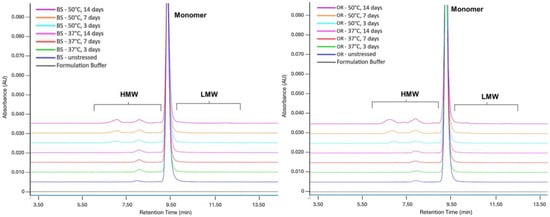
Figure 1
Open AccessArticle
Phytochemical Profiling and Biological Evaluation of Dianthus sylvestris subsp. aristidis: A Chromatographic and Mass Spectrometry Approach to Uncovering Bioactive Metabolites for Dermatological and Metabolic Disorder Management
by
Amina Bouzana, Zohra Chekroud, Imène Becheker, Fatima Kamah, Nora Sakhraoui, Chawki Bensouici, Fehmi Boufahja, Sulaiman A. Alsalamah, Mohammed I. Alghonaim, Stefania Garzoli and Hamdi Bendif
Pharmaceuticals 2025, 18(4), 578; https://doi.org/10.3390/ph18040578 - 16 Apr 2025
Abstract
Background/Objectives: This study provides the first comprehensive phytochemical composition and biological evaluation of Dianthus sylvestris subsp. aristidis (Batt.) Greuter & Burdet, a plant endemic to Algeria with unexplored pharmacological potential. The objective is to identify novel bioactive metabolites in the plant’s extracts
[...] Read more.
Background/Objectives: This study provides the first comprehensive phytochemical composition and biological evaluation of Dianthus sylvestris subsp. aristidis (Batt.) Greuter & Burdet, a plant endemic to Algeria with unexplored pharmacological potential. The objective is to identify novel bioactive metabolites in the plant’s extracts and assess their potential applications for skincare and metabolic disorder management, addressing gaps in the current understanding of its medicinal value. Methods: Liquid chromatography coupled with electrospray ionization tandem mass spectrometry (LC-ESI-MS/MS) profiling was used to analyze the hydromethanolic (HMeOH) leaf extract and identify bioactive compounds. The biological activities of HMeOH, ethyl acetate (EtOAc), and butanolic (n-BuOH) extracts were tested for cytotoxicity using the brine shrimp lethality test, photoprotective potential by calculating the sun protection factor (SPF), and enzymatic inhibitory activities against alpha-amylase, urease, and tyrosinase. Results: The LC-ESI-MS/MS profiling of the MeOH extract identified 22 bioactive compounds, including phenolic acids and flavonoids, some of which have not been previously reported in this species. Cytotoxicity tests showed that all extracts were non-toxic (half-lethal concentration (LC50) > 100 micrograms per milliliter). The SPF values indicated significant photoprotective potential, with EtOAc (SPF = 45.19 ± 0.73) and n-BuOH (SPF = 43.81 ± 0.59) extracts showing high sun protection activity. The n-BuOH extract exhibited strong alpha-amylase inhibitory activity (half-maximal inhibitory concentration (IC50) = 307.08 micrograms per milliliter), surpassing the standard acarbose (IC50 = 3650.93 micrograms per milliliter), suggesting potential applications in diabetes management. Conclusions: Dianthus sylvestris subsp. aristidis demonstrates significant pharmacological potential as a source of bioactive secondary metabolites for skincare and metabolic disorder management. These findings provide new insights into the plant’s therapeutic potential and set a foundation for future pharmacological and clinical investigations.
Full article
(This article belongs to the Section Natural Products)
►▼
Show Figures
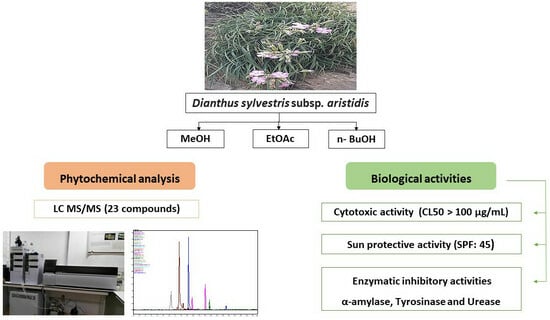
Graphical abstract
Open AccessReview
Drug Discovery for Histone Deacetylase Inhibition: Past, Present and Future of Zinc-Binding Groups
by
Gustavo Salgado Pires, Heber Victor Tolomeu, Daniel Alencar Rodrigues, Lídia Moreira Lima, Carlos Alberto Manssour Fraga and Pedro de Sena Murteira Pinheiro
Pharmaceuticals 2025, 18(4), 577; https://doi.org/10.3390/ph18040577 - 16 Apr 2025
Abstract
Histone deacetylases (HDACs) are key regulators of gene expression, influencing chromatin remodeling and playing a crucial role in various physiological and pathological processes. Aberrant HDAC activity has been linked to cancer, neurodegenerative disorders, and inflammatory diseases, making these enzymes attractive therapeutic targets. HDAC
[...] Read more.
Histone deacetylases (HDACs) are key regulators of gene expression, influencing chromatin remodeling and playing a crucial role in various physiological and pathological processes. Aberrant HDAC activity has been linked to cancer, neurodegenerative disorders, and inflammatory diseases, making these enzymes attractive therapeutic targets. HDAC inhibitors (HDACis) have gained significant attention, particularly those containing zinc-binding groups (ZBGs), which interact directly with the catalytic zinc ion in the enzyme’s active site. The structural diversity of ZBGs profoundly impacts the potency, selectivity, and pharmacokinetics of HDACis. While hydroxamic acids remain the most widely used ZBGs, their limitations, such as metabolic instability and off-target effects, have driven the development of alternative scaffolds, including ortho-aminoanilides, mercaptoacetamides, alkylhydrazides, oxadiazoles, and more. This review explores the structural and mechanistic aspects of different ZBGs, their interactions with HDAC isoforms, and their influence on inhibitor selectivity. Advances in structure-based drug design have allowed the fine-tuning of HDACi pharmacophores, leading to more selective and efficacious compounds with improved drug-like properties. Understanding the nuances of ZBG interactions is essential for the rational design of next-generation HDACis, with potential applications in oncology, neuroprotection, and immunotherapy.
Full article
(This article belongs to the Special Issue A Commemorative Special Issue in Honor of Professor Carlos Alberto Manssour Fraga: Medicinal Chemistry’s Efforts to Discover Novel Bioactive Molecules for Complex Diseases)
►▼
Show Figures
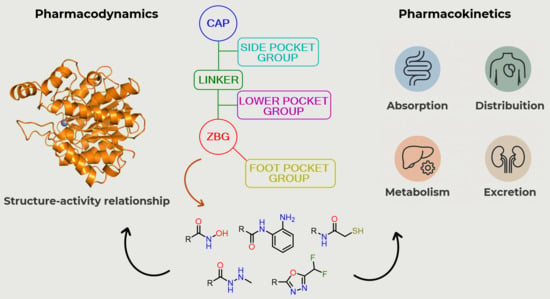
Graphical abstract
Open AccessArticle
Bioactivities and Chemotaxonomy of Four Heracleum Species: A Comparative Study Across Plant Parts
by
Tugce Ince Kose, Gamze Benli Yardimci, Damla Kirci, Derya Cicek Polat, Betul Demirci, Mujde Eryilmaz and Ceyda Sibel Kilic
Pharmaceuticals 2025, 18(4), 576; https://doi.org/10.3390/ph18040576 - 16 Apr 2025
Abstract
Background/Objectives: This study investigates the phytochemical profile, essential oil composition, and bioactivities—including antioxidant, antimicrobial, antibio-film, and anti-quorum sensing (QS) activities—of four Heracleum L. species (H. crenatifolium Boiss, H. paphlagonicum Czeczott, H. sphondylium subsp. montanum Schleich. ex Gaudin, and H. pastinacifolium subsp.
[...] Read more.
Background/Objectives: This study investigates the phytochemical profile, essential oil composition, and bioactivities—including antioxidant, antimicrobial, antibio-film, and anti-quorum sensing (QS) activities—of four Heracleum L. species (H. crenatifolium Boiss, H. paphlagonicum Czeczott, H. sphondylium subsp. montanum Schleich. ex Gaudin, and H. pastinacifolium subsp. incanum (Boiss. & A.Huet) P.H.Davis). Methods: Total phenolic and flavonoid contents were quantified using the Folin–Ciocalteu and aluminum chloride colorimetric methods, respectively. Essential oils were extracted by hydrodistillation and analyzed via Gas Chromatography–Flame Ionization Detector (GC–FID) and Gas Chromatography–Mass Spectrometry (GC–MS), while Principal Component Analysis (PCA) and Hierarchical Cluster Analysis (HCA) evaluated chemical variability among the species. Antioxidant activities were assessed using DPPH and ABTS free radical scavenging assays. Antimicrobial activity was assessed using the broth microdilution method to determine Minimum Inhibitory Concentration (MIC) values, while antibiofilm activity was evaluated using an in vitro microplate-based biofilm model against Pseudomonas aeruginosa PAO1. Anti-QS activity was analyzed using a disc diffusion assay with Chromobacterium violaceum ATCC 12472 as the reporter strain. Results: It was observed that the amounts of total phenolic compounds and total flavonoids were higher in root extracts than in aerial parts extracts for the four species in this study (H. sphondylium subsp. montanum excluding phenolic content). In the analysis of essential oil, it was determined that the major component in the roots was mostly myristicin, and in the fruits it was mostly octyl acetate. Phenolic and flavonoid contents were positively correlated with antioxidant activity. Methanol and n-hexane extracts of H. pastinacifolium (aerial parts) and n-hexane extracts of H. paphlagonicum (root) exhibited notable antimicrobial activity, primarily against Gram-positive bacteria, but none of the extracts showed activity against Klebsiella pneumoniae ATCC 13383 or P. aeruginosa ATCC 27853. Among methanol extracts, H. pastinacifolium (aerial parts) exhibited the highest antibiofilm activity (73.2%), while H. paphlagonicum (aerial parts) showed the highest activity among n-hexane extracts (75.5%). All n-hexane extracts exhibited anti-QS activity, whereas the methanol extracts showed no activity. Conclusions: These findings underscore the chemical diversity and bioactive potential of Heracleum species, contributing to the chemotaxonomic understanding of the genus and supporting their potential applications in medicine and industry. To our knowledge, this is the first study that reveals the antibiofilm and anti-QS properties of these Heracleum species.
Full article
(This article belongs to the Special Issue Natural Products and Their Modifications as Agents Used in the Fight against Pathogens)
►▼
Show Figures
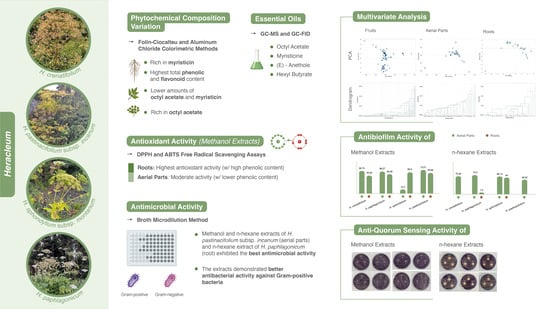
Graphical abstract
Open AccessArticle
A Prospective Randomized Pilot Study on the Efficacy of a Dietary Supplementation Regimen of Vitamin E and Selenium for the Prevention of Fluoroquinolone-Induced Tendinopathy
by
Oana-Maria Mișcă, Liviu-Coriolan Mișcă, Bogdan Huzum, Andreea-Adriana Neamţu, Simona Cerbu, Daniel-Raul Chioibaș, Petrișor Zorin Crăiniceanu and Andrei Gheorghe Marius Motoc
Pharmaceuticals 2025, 18(4), 575; https://doi.org/10.3390/ph18040575 - 15 Apr 2025
Abstract
Background: Fluoroquinolone-induced tendinopathy is a clinically significant adverse effect associated with this class of antibiotics, particularly affecting the Achilles tendon. Despite its growing recognition, the precise pathophysiological mechanisms remain incompletely understood, with hypotheses referencing increased matrix metalloproteinase activity, collagen degradation, and oxidative
[...] Read more.
Background: Fluoroquinolone-induced tendinopathy is a clinically significant adverse effect associated with this class of antibiotics, particularly affecting the Achilles tendon. Despite its growing recognition, the precise pathophysiological mechanisms remain incompletely understood, with hypotheses referencing increased matrix metalloproteinase activity, collagen degradation, and oxidative stress. Methods: This prospective randomized pilot study evaluates the potential protective effectiveness of vitamin E and selenium supplementation in mitigating fluoroquinolone-induced tendinopathy. The study was conducted on 25 patients receiving 500 mg/day levofloxacin antibiotherapy, randomly divided into a control group and an experimental group—vitamin E (400 IU/day) and selenium (200 µg/day), oral supplementation for 28 days. Clinical assessment of the pain level through the VAS score and of functionality through the VISA-A score was performed, alongside ultrasound imaging of the Achilles tendon. To assess potential toxicity and ensure adherence to the supplementation protocol, serial biochemical analyses of serum vitamin E and selenium were performed at predetermined intervals. Results: A significant improvement was observed in pain scores (p = 0.0120) and functional outcomes (p = 0.0340) when comparing the control and experimental groups at the three-month follow-up. Ultrasound analysis revealed reduced tendon thickness and neovascularization, supporting structural recovery. Although the incidence of tendinopathy was lower in the interventional group (13.3% vs. 40%), statistical significance was not reached, possibly due to the small sample size. Conclusions: These findings suggest that antioxidant supplementation with vitamin E and selenium may provide a protective effect against fluoroquinolone-induced tendinopathy, warranting further investigation in larger randomized clinical trials.
Full article
(This article belongs to the Special Issue Fluoroquinolones)
►▼
Show Figures
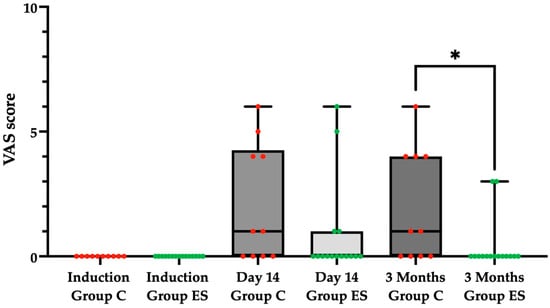
Figure 1
Open AccessArticle
Lipid-Based Nanoformulations of [6]-Gingerol for the Chemoprevention of Benzo[a] Pyrene-Induced Lung Carcinogenesis: Preclinical Evidence
by
Faris Alrumaihi, Ali Yousif Babiker and Arif Khan
Pharmaceuticals 2025, 18(4), 574; https://doi.org/10.3390/ph18040574 - 15 Apr 2025
Abstract
Background/Objectives: [6]-Gingerol ([6]-G), a bioactive compound derived from Zingiber officinale (ginger), exhibits strong anticancer potential but is hindered by poor aqueous solubility and low bioavailability. This study aimed to develop and evaluate PEGylated liposomal [6]-G (6-G-Lip) to enhance its stability, bioavailability, and chemopreventive
[...] Read more.
Background/Objectives: [6]-Gingerol ([6]-G), a bioactive compound derived from Zingiber officinale (ginger), exhibits strong anticancer potential but is hindered by poor aqueous solubility and low bioavailability. This study aimed to develop and evaluate PEGylated liposomal [6]-G (6-G-Lip) to enhance its stability, bioavailability, and chemopreventive efficacy in benzo[a]pyrene (BaP)-induced lung carcinogenesis. Methods: 6-G-Lip was synthesized using a modified thin-film hydration technique and characterized for size, polydispersity index (PDI), zeta potential, encapsulation efficiency (EE%), and release kinetics. The chemopreventive effects were assessed in BaP-induced lung cancer in Swiss albino mice, with prophylactic 6-G-Lip administration from two weeks before BaP exposure through 21 weeks. Cancer biomarkers, antioxidant enzyme activity, reactive oxygen species (ROS) generation, induction of apoptosis, and histopathological alterations were analyzed. Results: 6-G-Lip exhibited a particle size of 129.7 nm, a polydispersity index (PDI) of 0.16, a zeta potential of −18.2 mV, and an encapsulation efficiency (EE%) of 91%, ensuring stability and effective drug loading. The formulation exhibited a controlled release profile, with 26.5% and 47.5% of [6]-G released in PBS and serum, respectively, at 72 h. 6-G-Lip significantly lowered cancer biomarkers, restored antioxidant defenses (SOD: 5.60 U/min/mg protein; CAT: 166.66 μm H2O2/min/mg protein), reduced lipid peroxidation (MDA: 3.3 nm/min/mg protein), and induced apoptosis (42.2%), highlighting its chemopreventive efficacy. Conclusions: This study is the first to prepare, characterize, and evaluate PEGylated [6]-G-Lip for the chemoprevention of lung cancer. It modulates oxidative stress, restores biochemical homeostasis, and selectively induces apoptosis. These findings support 6-G-Lip as a promising nanotherapeutic strategy for cancer prevention.
Full article
(This article belongs to the Special Issue Plant-Derived Nanotherapeutics and Nanocarriers: Recent Progress and Future Directions)
►▼
Show Figures
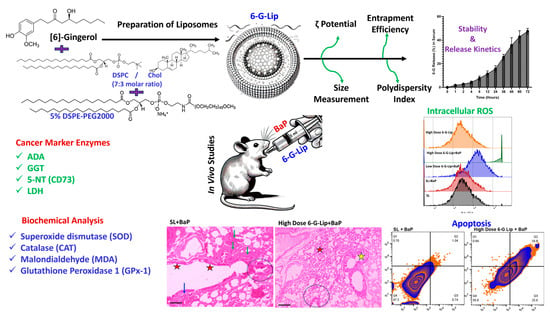
Graphical abstract
Open AccessReview
From Olive Tree to Treatment: Nano-Delivery Systems for Enhancing Oleuropein’s Health Benefits
by
Maha Nasr and Salma H. Katary
Pharmaceuticals 2025, 18(4), 573; https://doi.org/10.3390/ph18040573 - 15 Apr 2025
Abstract
Oleuropein is a natural polyphenolic compound isolated from olive trees (Olea europaea). Besides the strong antioxidant effect of oleuropein, it has many pharmacological activities such as anticancer, antidiabetic, anti-inflammatory, antihypertensive, and many other activities. Thus, oleuropein could be used alone or
[...] Read more.
Oleuropein is a natural polyphenolic compound isolated from olive trees (Olea europaea). Besides the strong antioxidant effect of oleuropein, it has many pharmacological activities such as anticancer, antidiabetic, anti-inflammatory, antihypertensive, and many other activities. Thus, oleuropein could be used alone or with other drugs to prevent and treat many diseases. Despite its promising health benefits, oleuropein is highly prone to hydrolysis inside and outside the human body, in addition to a poorly identified pharmacokinetic profile and poor bioavailability. Many nanocarrier delivery systems have overcome the delivery limitations of oleuropein in order to maximize its therapeutic benefits. Therefore, this review article sheds light on nano-delivery systems explored until the current date, aiming to enhance oleuropein’s bioavailability and therapeutic impact by improving its pharmacokinetic properties and addressing its stability challenges. Continued research into innovative nanotechnology solutions will be crucial in unlocking the full potential of oleuropein as a powerful nutraceutical and pharmaceutical agent.
Full article
(This article belongs to the Section Pharmaceutical Technology)
►▼
Show Figures
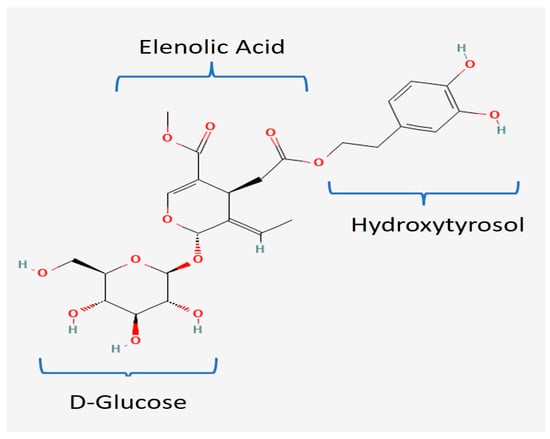
Figure 1
Open AccessArticle
Clinical Study Support by Long-Term Stability Studies of Alpha1-Proteinase Inhibitor and Urea in Relevant Biological Matrices
by
Andrea Engelmaier, Martin Zimmermann, Harald A. Butterweck and Alfred Weber
Pharmaceuticals 2025, 18(4), 572; https://doi.org/10.3390/ph18040572 - 14 Apr 2025
Abstract
Background/Objectives: According to recent guidelines, including the guideline on bioanalytical method validation issued by the European Medicine Agency, the stability of clinical analytes should be known. We summarize human α1-proteinase inhibitor (A1PI) and urea stability data in relevant matrices, as
[...] Read more.
Background/Objectives: According to recent guidelines, including the guideline on bioanalytical method validation issued by the European Medicine Agency, the stability of clinical analytes should be known. We summarize human α1-proteinase inhibitor (A1PI) and urea stability data in relevant matrices, as these analytes are usually measured in clinical A1PI studies. Methods: Stability samples with appropriate A1PI concentrations were prepared in a citrated human reference plasma pool and a matrix mimicking bronchoalveolar lavage (BAL) solution. These samples were kept at −20 °C and −60 °C for up to 24 months. A1PI protein was measured with a nephelometric method and an enzyme-linked immunosorbent assay using paired commercially available polyclonal antibodies. A1PI elastase inhibitory activity was determined with an elastase complex formation immunosorbent assay that combines A1PI complex formation with a solid phase-immobilized elastase and immunological detection of the formed A1PI-elastase complex and urea in samples kept at −20 °C only with an enzymatic assay. Results: Overall, the stability criterion (100 ± 20%) was met for the analytes A1PI protein and A1PI activity at both temperatures during storage of BAL-mimicking and plasma samples for 15 and 24 months, respectively; urea was stable in both matrices at −20 °C for 18 months. Plasma samples showed smaller drops in concentration over storage time than BAL-mimicking samples. As expected, the reduction of A1PI elastase inhibitory activity was more pronounced than that of A1PI protein. Interestingly, the analyte concentration did not significantly influence the results in either of the sample matrices. Conclusions: The data confirmed the appropriate stability of the three analytes in the matrices of citrated plasma and BAL-mimicking samples for at least up to 15 months.
Full article
(This article belongs to the Section Pharmacology)
►▼
Show Figures

Figure 1
Open AccessArticle
Acute Supplementation of Soluble Mango Leaf Extract (Zynamite® S) Improves Mental Performance and Mood: A Randomized, Double-Blind, Placebo-Controlled Crossover Study
by
Yolanda Castellote-Caballero, Ana Beltrán-Arranz, Agustín Aibar-Almazán, María del Carmen Carcelén-Fraile, Yulieth Rivas-Campo, Laura López-Ríos, Tanausú Vega-Morales and Ana María González-Martín
Pharmaceuticals 2025, 18(4), 571; https://doi.org/10.3390/ph18040571 - 14 Apr 2025
Abstract
Background/Objectives: A mango (Mangifera indica) leaf extract (Zynamite®), rich in the polyphenol mangiferin, has been demonstrated to modulate brain activity, boost cognitive function, and reduce mental fatigue. Research evidence supports that improving the solubility of this extract could significantly
[...] Read more.
Background/Objectives: A mango (Mangifera indica) leaf extract (Zynamite®), rich in the polyphenol mangiferin, has been demonstrated to modulate brain activity, boost cognitive function, and reduce mental fatigue. Research evidence supports that improving the solubility of this extract could significantly enhance its efficacy as an active ingredient. This study examined the effects of a soluble version of Zynamite®, Zynamite® S (Zyn-S), on cognitive function and mood in young adults at low doses. Methods: A total of 119 university students were enrolled in the study. Participants were randomly assigned to receive either 100 mg, 150 mg, or placebo in a double-blind crossover design. Short- and long-term memory were evaluated using the Rey Auditory Verbal Learning Test (RAVLT), executive functions with the Trail Making Test (TMT), processing speed with the Digit Symbol Substitution Test (DSST), and selective attention with the Stroop Color and Word Test. Additionally, mood was assessed using the Spanish short version of the Profile of Mood States (POMS). All these assessments were conducted before taking the product and at 30 min, 3 h, and 5 h post-intake. Results: The results demonstrated that participants who received Zynamite® S experienced significant improvements in reduced tension, depression, and confusion, suggesting an enhancement in mental clarity and overall emotional well-being. Both interventions also improved processing speed and cognitive flexibility. However, no significant differences were observed in short- and long-term verbal memory. Conclusions: In summary, these findings support Zynamite® S as a natural nootropic capable of acutely improving key cognitive functions and emotional balance at low doses in young adults, with sustained efficacy for at least five hours.
Full article
(This article belongs to the Section Natural Products)
►▼
Show Figures
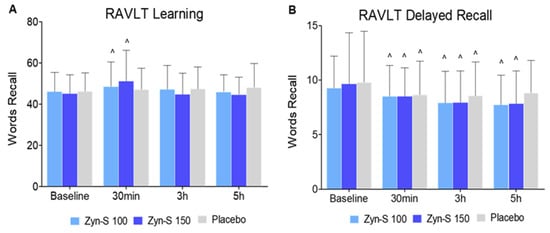
Figure 1
Open AccessArticle
Red Blood Cell-Based Delivery Systems for the Release of Hemoglobin-Derived Peptides with In Vitro Antitumor Activities
by
Cínthia Caetano Bonatto, Graziella Anselmo Joanitti and Luciano Paulino Silva
Pharmaceuticals 2025, 18(4), 570; https://doi.org/10.3390/ph18040570 - 14 Apr 2025
Abstract
Background/Objectives: This study aimed to develop liposomes derived from lipids obtained from red blood cell membranes for potential use in antitumor applications. Hemoglobin hydrolysates exhibiting peptides with known antitumor activities were encapsulated within these liposomes. Methods: The developed liposomal systems were characterized by
[...] Read more.
Background/Objectives: This study aimed to develop liposomes derived from lipids obtained from red blood cell membranes for potential use in antitumor applications. Hemoglobin hydrolysates exhibiting peptides with known antitumor activities were encapsulated within these liposomes. Methods: The developed liposomal systems were characterized by their physicochemical properties, including size, surface charge, and encapsulation efficiency, and tested in vitro against 4T1 breast cancer cells and NIH3T3 fibroblasts. Results: Results indicated that the liposomes achieved effective encapsulation (88.9%), with nanometer-scale sizes (ranging from 140.7 nm for Blank-Liposomes to 658.3 nm for Pep-Liposomes) and stable colloidal properties. Conclusions: Although cytotoxicity was limited, the use of liposomes from endogenous components, such as red blood cells, demonstrates promise as a complementary approach in anticancer therapy.
Full article
(This article belongs to the Special Issue Nanotechnology in Biomedical Applications)
►▼
Show Figures

Figure 1
Open AccessArticle
Tauroursodeoxycholic Acid Protects Retinal Ganglion Cells and Reduces Inflammation in Mice Following Optic Nerve Crush
by
Nan Zhang, Ying Li, Xian Zhang, Micah A. Chrenek, Jiaxing Wang, Preston E. Girardot, Jana T. Sellers, Eldon E. Geisert, John M. Nickerson and Jeffrey H. Boatright
Pharmaceuticals 2025, 18(4), 569; https://doi.org/10.3390/ph18040569 - 14 Apr 2025
Abstract
Purpose: The aim of this study was to investigate the protective effects of systemically administered tauroursodeoxycholic acid (TUDCA) in an optic nerve crush (ONC) mouse model of retinal ganglion cell (RGC) death. Methods: C57BL/6J mice were injected intraperitoneally (i.p.) three times per week
[...] Read more.
Purpose: The aim of this study was to investigate the protective effects of systemically administered tauroursodeoxycholic acid (TUDCA) in an optic nerve crush (ONC) mouse model of retinal ganglion cell (RGC) death. Methods: C57BL/6J mice were injected intraperitoneally (i.p.) three times per week with TUDCA (500 mg/kg) for two weeks, after which unilateral ONC was performed. A control cohort was identically treated with a drug vehicle (phosphate buffered saline; PBS). A separate cohort did not undergo any injections or surgeries (this was termed the “Naïve” group). Pattern electroretinography (PERG) was recorded 3 days after ONC. Retinas were harvested for whole-mount immunofluorescence staining with an antibody against RGC marker Brn3a and imaged by fluorescent confocal microscopy. Apoptotic cells in the ganglion cell layer (GCL) were detected by Terminal Deoxynucleotidyl Transferase-Mediated dUTP Nick End Labeling (TUNEL) performed on fixed retina sections. Glial fibrillary acidic protein (GFAP) immunostaining on fixed retina sections was conducted to detect the activation of Müller cells. Total RNA was extracted from retinas and expression of interleukin (IL)-1β, IL-6, tumor necrosis factor (TNF)-α, and IL-10 was determined by digital droplet PCR (ddPCR). Results: TUDCA treatment preserved visual function as assessed by PERG. P1 and N2 amplitudes from the PBS-treated ONC group were significantly diminished compared to those of the Naïve group (p < 0.001). TUDCA treatment prevented this diminution. The amplitudes of P1 and N2 in the TUDCA-treated ONC group were statistically indistinguishable from those of the Naïve group and were higher than the PBS-treated ONC group (TUDCA+ONC vs. PBS+ONC, P1: 6.99 ± 0.89 µV vs. 3.60 ± 0.69 µV, p < 0.01; N2: −9.30 (IQR: −13.43–−6.44) µV vs. −4.47 (IQR: −10.26–−2.17) µV). TUDCA treatment preserved RGCs. The ONC-vehicle-only group had 25% fewer RGCs (Brn3a-positive cells) than Naïve eyes (p < 0.0001). TUDCA treatment nearly completely prevented this loss, preserving all but 7.7% of the RGCs, and the number of RGCs in the TUDCA-treated ONC group was significantly higher than in the PBS-treated ONC group (TUDCA+ONC vs. PBS+ONC, 1738.00 ± 14.43 cells per field vs. 1454.00 ± 6.55 cells per field, p < 0.0001). The number of TUNEL-positive cells in the GCL (Naïve vs. PBS+ONC group: 1.00 (IQR: 0.00–2.00) % vs. 37.00 (IQR: 8.50–48.50) %, p < 0.05) and GFAP-positive fibers transversing retina sections (Naïve vs. PBS+ONC group: 33.00 ± 1.15 vs. 185.70 ± 42.37 fibers/retina, p < 0.05), and the expression of IL-6, TNF-α were significantly greater in the PBS-treated ONC group compared to that of the Naïve group (Naïve vs. PBS+ONC group, IL-6: 0.07 (IQR: 0.06–0.31) vs. 0.99 (IQR: 0.56–1.47), p < 0.05, TNF-α: 0.19 ± 0.069 vs. 1.39 ± 0.23; p < 0.01), an increase not observed with TUDCA treatment. Conclusions: Systemic TUDCA treatment significantly preserved RGC function and survival in the mouse ONC model of RGC damage. TUDCA treatment prevented RGC apoptosis, Müller glial cell activation, and retinal expression of several inflammatory cytokines. These data suggest that TUDCA is a promising therapeutic candidate for preserving RGC numbers and function.
Full article
(This article belongs to the Special Issue 20th Anniversary of Pharmaceuticals—Advances in Pathophysiology, Pharmacology and Neuroprotection in Glaucoma)
►▼
Show Figures

Graphical abstract
Open AccessArticle
Beyond-Rule-of-Five Compounds Are Not Different: In Vitro–In Vivo Extrapolation of Female CD-1 Mouse Clearance Based on Merck Healthcare KGaA Compound Set
by
Christine K. Maurer, Zhizhou Fang, Heide M. Duevel, Stephanie Harlfinger and Carl Petersson
Pharmaceuticals 2025, 18(4), 568; https://doi.org/10.3390/ph18040568 - 14 Apr 2025
Abstract
Background: Extrapolation of intrinsic clearance from in vitro systems such as liver microsomes or hepatocytes is an established approach to predict clearance in preclinical species and in humans. A common discussion in the literature is whether the predictive accuracy of such extrapolations is
[...] Read more.
Background: Extrapolation of intrinsic clearance from in vitro systems such as liver microsomes or hepatocytes is an established approach to predict clearance in preclinical species and in humans. A common discussion in the literature is whether the predictive accuracy of such extrapolations is influenced by the chemotype and whether these methods are also applicable to compounds studied in early drug discovery programs. Compounds in such programs are frequently lipophilic and show low solubility and low free fraction in plasma, which may pose challenges to the extrapolation of clearance different from those of the final clinical candidates. A similar discussion has been raised about compounds residing beyond the traditional small-molecule property space, such as PROTACs© and other molecules incompatible with Lipinski’s rule-of-five. Methods: To further enlighten the field on these matters, we present a study comparing the predictive accuracy between mouse hepatocytes and microsomes for a set of molecules (N = 211) from the Merck Healthcare drug discovery pipeline. This set was dominated by compounds belonging to class 2 and 4 of the extended clearance classification systems (ECCS). It contained a similar proportion of molecules compliant with the Lipinski rule-of-five (N = 127) and molecules lacking such compliance (N = 84). Results: This study showed no or little differences in predictive accuracy nor bias between the two groups, with an average fold error close to 1, an absolute average fold error of just over 2, and around 50% being within 2-fold and >90% being within 5-fold of the predicted unbound clearance in both in vitro systems. Furthermore, no significant differences in accuracy were observed for compounds with an extremely low free fraction (down to 0.05%) in plasma. Conclusions: The accuracy of in vitro–in vivo extrapolation of female CD-1 mouse clearance was not affected by the physicochemical properties.
Full article
(This article belongs to the Section Pharmacology)
►▼
Show Figures
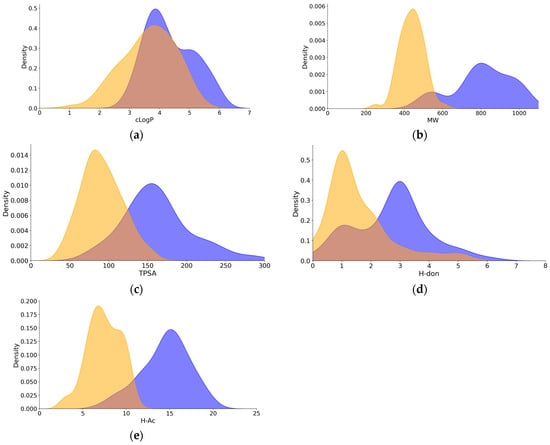
Figure 1
Open AccessArticle
Hexasodium Fytate (SNF472 or CSL525) Inhibits Ectopic Calcification in Various Pseudoxanthoma Elasticum and Calcinosis Cutis Animal Models
by
Miguel D. Ferrer, Maria del Mar Pérez-Ferrer, Marc Blasco, Ida Joely Jacobs, Qiaoli Li, Olivier M. Vanakker, Lisa Dangreau, Andrea López, Gianluca Malagraba, Firas Bassissi, Joan Perelló and Carolina Salcedo
Pharmaceuticals 2025, 18(4), 567; https://doi.org/10.3390/ph18040567 - 14 Apr 2025
Abstract
Background/Objectives: Ectopic calcification is a pathological condition characterized by the mineralization of soft tissues due to the deposition of calcium phosphate crystals. Hexasodium fytate (CSL525, previously known as SNF472) is a crystallization inhibitor being developed for the treatment of ectopic calcification-related disorders. Our
[...] Read more.
Background/Objectives: Ectopic calcification is a pathological condition characterized by the mineralization of soft tissues due to the deposition of calcium phosphate crystals. Hexasodium fytate (CSL525, previously known as SNF472) is a crystallization inhibitor being developed for the treatment of ectopic calcification-related disorders. Our aim was to investigate CSL525 for the treatment of soft-tissue calcification disorders in animal models of pseudoxanthoma elasticum and calcinosis cutis. Methods: In a first study, abcc6-/- zebrafish larvae were exposed to 1 mM CSL525 for 7 days or kept under the same conditions without CSL525, and spinal mineralization was quantified. In a second study, abcc6-/- mice were administered subcutaneously with CSL525 at 15 mg/kg thrice weekly for eight weeks. Vehicle-treated WT (C57BL/6J) and abcc6-/- mice served as controls, and muzzle skin calcification was quantified. In a third study, calcinosis cutis was induced in rats through subcutaneous administration of 0.15 mg FeCl3 at two sites in the thorax. Rats were administered either subcutaneous CSL525 (60 mg/kg) or vehicle (0.9% NaCl), and calcium content was measured in the skin. Results: CSL525 significantly reduced the calcified area (~40%) in abcc6a-/- zebrafish larvae. The abcc6-/- mice receiving CSL525 showed a 57% inhibition of muzzle calcification compared to vehicle-treated abcc6-/- mice. CSL525 inhibited skin calcification development by 60% in the calcinosis cutis rat model. Conclusions: CSL525 may prove beneficial not only in preventing the progression of cardiovascular calcification but also in treating other ectopic calcification conditions, including skin calcification associated with genetic disorders such as PXE.
Full article
(This article belongs to the Section Pharmacology)
►▼
Show Figures
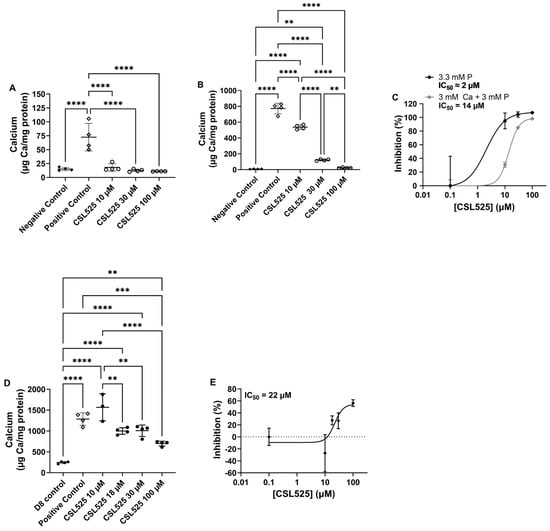
Figure 1
Open AccessArticle
Identification of Potential Inhibitors Targeting Non-Structural Proteins NS3 and NS5 of Dengue Virus Using Docking and Deep Learning Approaches
by
Alomgir Hossain, Faria Tasnin Joti, Md. Shohag Hossain, Abdullah Al-Noman, Chomong Thowing, Mehjabin Mursona, Md. Robiul Islam, Md. Ekhtiar Rahman, Mohammad Nurul Matin and Md Azizul Haque
Pharmaceuticals 2025, 18(4), 566; https://doi.org/10.3390/ph18040566 - 13 Apr 2025
Abstract
Background: Dengue virus (DENV) is the fatal pathogenic arthropod-borne virus (arboviruses) that belongs to the Flaviviridae family, which transmits to humans through mosquito bites from infected Aedes aegypti and Aedes albopictus mosquitoes or maternal-fetal transmission. Despite antigenic differences, the four serotypes of
[...] Read more.
Background: Dengue virus (DENV) is the fatal pathogenic arthropod-borne virus (arboviruses) that belongs to the Flaviviridae family, which transmits to humans through mosquito bites from infected Aedes aegypti and Aedes albopictus mosquitoes or maternal-fetal transmission. Despite antigenic differences, the four serotypes of DENV (DENV-1 to DENV-4) share 65–78% of their genome. Non-structural (NS) proteins amongst serotypes show analogous functions. Among NS proteins, NS3 and NS5 are frequently used as targets for antiviral drugs due to their multifunctional roles. Methods: To identify potential inhibitors of DENV, we created a phytochemical library of 898 compounds derived from 17 medicinal plants recognized for their medicinal and antiviral properties. The phytochemicals library has been docked against the target proteins. Phytochemicals with a docking score greater than −8.0 kcal/mol were selected for further evaluation using a machine learning approach. Further, molecular dynamics (MD) simulations were conducted to evaluate the root mean square deviation, root mean square fluctuation, solvent-accessible surface area, radius of gyration, and hydrogen bond count of the compounds. Results: From the docking results, Silibinin, Rubiadin, and Ellagic acid showed binding affinities of −8.5, −8.3, and −8.2 kcal/mol, respectively, for NS3, and NSC 640467, Bisandrographolide A, and Andrographidin A showed binding affinities of −9.3, −10.1, and −9.3 kcal/mol, respectively, for NS5 target proteins. These compounds exhibited strong interactions with target proteins. MD simulation results confirmed the stable formation of protein–ligand complexes. Further, absorption, distribution, metabolism, excretion, and toxicity (ADMET) and bioactivity predictions confirmed their pharmacological safety. Conclusions: Despite global public health concerns, DENV still lacks specific drug treatments. Our identified new drug candidates might help for developing effective antiviral inhibitors against the DENV. However, further confirmation is needed through in vivo and in vitro research.
Full article
(This article belongs to the Special Issue Small-Molecule Inhibitors for Novel Therapeutics)
►▼
Show Figures
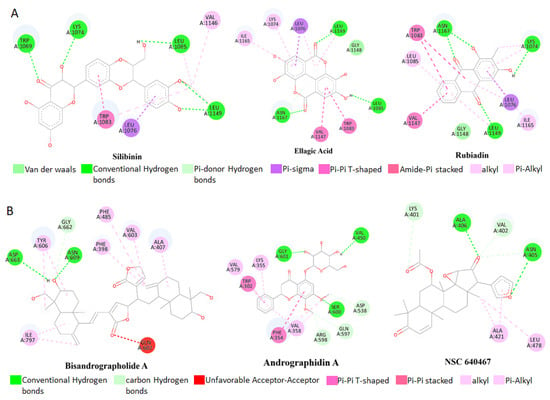
Figure 1

Journal Menu
► ▼ Journal Menu-
- Pharmaceuticals Home
- Aims & Scope
- Editorial Board
- Reviewer Board
- Topical Advisory Panel
- Instructions for Authors
- Special Issues
- Topics
- Sections & Collections
- Article Processing Charge
- Indexing & Archiving
- Editor’s Choice Articles
- Most Cited & Viewed
- Journal Statistics
- Journal History
- Journal Awards
- Society Collaborations
- Conferences
- Editorial Office
Journal Browser
► ▼ Journal BrowserHighly Accessed Articles
Latest Books
E-Mail Alert
News
Topics
Topic in
IJMS, JCM, Molecules, Pharmaceuticals, Pharmaceutics, Chemistry
Opioids and Their Receptors: Present and Emerging Concepts in Opioid Drug Discovery
Topic Editors: Mariana Spetea, Hideaki Fujii, Jay P. McLaughlinDeadline: 30 April 2025
Topic in
Biomedicines, JNT, Pharmaceutics, Polymers, Nanomaterials, Pharmaceuticals, Biophysica
Applications of Polymers and Polymer Nanomaterials in Drug Delivery and Nanomedicine
Topic Editors: Stanislav Rangelov, Emi HaladjovaDeadline: 31 May 2025
Topic in
Antibiotics, Biomedicines, JCM, Pharmaceuticals, Pharmaceutics
Challenges and Future Prospects of Antibacterial Therapy
Topic Editors: Kwang-sun Kim, Zehra EdisDeadline: 30 June 2025
Topic in
Applied Microbiology, Microorganisms, Pharmaceuticals, Pharmaceutics, Foods
Probiotics: New Avenues
Topic Editors: Daniela Machado, José Carlos AndradeDeadline: 15 August 2025

Conferences
Special Issues
Special Issue in
Pharmaceuticals
Therapeutic Methods Against Acute and Chronic Diseases and Oxidative Stress
Guest Editor: Yanka KaramalakovaDeadline: 20 April 2025
Special Issue in
Pharmaceuticals
Peptide Synthesis and Drug Development: Exploring Progress and Potential
Guest Editors: Othman Al Musaimi, Da’san M.M. Jaradat, Vera D'AloisioDeadline: 20 April 2025
Special Issue in
Pharmaceuticals
Pharmacotherapy for Neuropathic Pain
Guest Editors: Vittoria Borgonetti, Nicoletta GaleottiDeadline: 20 April 2025
Special Issue in
Pharmaceuticals
Promising Natural Products in New Drug Design and Therapy
Guest Editor: Mohammad S. MubarakDeadline: 20 April 2025
Topical Collections
Topical Collection in
Pharmaceuticals
The Story of Successful Drugs and Recent FDA-Approved Molecules
Collection Editors: Maria Emília De Sousa, Jean Jacques Vanden Eynde, Klaus Kopka, Annie Mayence, Joachim Jose, Guangshun Wang
Topical Collection in
Pharmaceuticals
Therapeutic Agents for Neurological Disorders
Collection Editor: Damian Holsinger
Topical Collection in
Pharmaceuticals
Feature Review Collection of Natural Products
Collection Editors: Daniela De Vita, Thomas Efferth, Martina Bortolami
Topical Collection in
Pharmaceuticals
Feature Review Collection in Medicinal Chemistry
Collection Editors: Alessandra Ammazzalorso, Luís M. T. FrijaConference Reports
Pharmaceuticals 2023, 16(3), 432; https://doi.org/10.3390/ph16030432
Pharmaceuticals 2022, 15(4), 388; https://doi.org/10.3390/ph15040388










